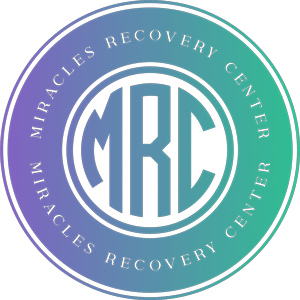Table of Contents
Understanding Insurance Coverage
Navigating the intricacies of insurance coverage for addiction treatment can be overwhelming. It’s essential to understand the benefits and specifics of your plan to ensure you can access the help you need.
Insurance Benefits for Addiction Treatment
Health insurance plans typically cover the cost of treatment for substance use disorders and mental health conditions. The extent of your coverage and any out-of-pocket expenses depend on the specifics of your insurance policy (American Addiction Centers).
Utilizing insurance coverage effectively can help you access necessary care without significant financial burden. Here are common plan types that may include benefits for addiction treatment:
| Plan Type | Description |
|---|---|
| HMO (Health Maintenance Organization) | Requires you to use specific providers and get referrals from a primary care physician. |
| PPO (Preferred Provider Organization) | Offers more flexibility in choosing providers, including out-of-network options, though at a higher cost. |
| POS (Point of Sale) | Combines features of HMO and PPO, allowing you some freedom while still requiring a primary care physician referral. |
Verifying the specifics of coverage, including deductibles and co-pays, is crucial to avoid unexpected expenses.
Verifying Insurance Coverage Details
Before entering a treatment program, it’s advisable to check with your insurance provider to confirm coverage details. Knowing what is covered will give you peace of mind as you begin the recovery journey (American Addiction Centers). Here are steps to verify your insurance coverage:
- Contact Your Insurance Provider: Call the number on the back of your insurance card to speak with a representative.
- Ask Specific Questions: Inquire about coverage for outpatient rehab, including Intensive Outpatient Programs (IOP) and Partial Hospitalization Programs (PHP). Confirm if they are listed as in-network providers.
- Documentation: Request written confirmation of your coverage terms, including the length of stay and services covered.
American Addiction Centers can assist in this process, relieving you of the burden of verifying coverage. They provide comprehensive guidance on in-network treatment facilities, the length of stay covered under your plan, and can even communicate directly with your insurer on your behalf (American Addiction Centers).
Understanding the nuances of your insurance can empower you to pursue the essential treatment you need. Once you have clarity on your coverage, it will be easier to choose between programs like intensive outpatient program covered by insurance or partial hospitalization program insurance accepted.
Levels of Outpatient Care
Understanding the levels of outpatient care is crucial for those seeking support for addiction. This section will provide an overview of outpatient rehab and highlight how it differs from inpatient treatment, helping you make informed decisions about your recovery journey.
Outpatient Rehab Overview
Outpatient rehab is designed for individuals with mild to moderate substance use disorders. This flexible treatment option allows you to receive care while continuing with your daily responsibilities, such as work or school. Typically, outpatient programs last from 3 to 6 months and can extend over a year depending on your needs (Addiction Center). Treatment sessions usually consist of about 3 hours a day, 3 to 5 days a week.
The benefits of outpatient rehab include:
- Ability to stay at home or in a sober living environment
- Access to family and support systems during treatment
- Flexible scheduling, with sessions often held in the evening or early morning
Here’s a breakdown of the structure of outpatient treatment:
| Program Duration | Treatment Hours per Day | Frequency per Week |
|---|---|---|
| 3 – 6 months | 3 hours | 3 – 5 days |
Differences from Inpatient Treatment
Inpatient treatment differs significantly from outpatient care, primarily in the level of support and structure provided. In inpatient programs, patients reside on-site and have access to 24/7 medical care and psychotherapy. This intensive environment can be crucial for individuals with more severe substance use disorders requiring constant support.
The key differences include:
| Factor | Outpatient Rehab | Inpatient Rehab |
|---|---|---|
| Living Arrangements | Home or sober living | On-site facility |
| Treatment Hours | 3 hours per day | Varies, often more intensive |
| Support Availability | Limited to scheduled sessions | 24/7 medical and therapeutic staff |
| Cost | Generally lower due to reduced care | Generally higher due to comprehensive support |
While both options aim to help you recover and reclaim your life, the choice between outpatient and inpatient treatment depends on your specific situation, including the severity of your addiction and your support system at home.
For those considering outpatient rehab with insurance coverage, treatment options such as the intensive outpatient program covered by insurance or the partial hospitalization program insurance accepted may provide the structured support you need without sacrificing your daily routine.
If you’re unsure which option might be best for you or want more information on programs available, consider reaching out to Miracles Recovery Center. They can guide you through your choices and assist you in leveraging your insurance coverage for your treatment needs.
Types of Outpatient Programs
Finding the right outpatient program can significantly impact your recovery journey. For many adults balancing daily responsibilities, programs like the Intensive Outpatient Program (IOP) and the Partial Hospitalization Program (PHP) offer flexible, structured treatment options, often covered by insurance. Here’s an overview of each program type to help you make an informed decision.
Intensive Outpatient Program (IOP)
The Intensive Outpatient Program (IOP) is designed for individuals who need a higher level of care than traditional outpatient therapy but are still able to maintain their daily routines. This program is especially beneficial for those who may have completed an inpatient treatment program or those who have a mild to moderate substance use disorder. IOP allows you to receive comprehensive treatment while living at home or managing work or school responsibilities.
| Aspect | Description |
|---|---|
| Sessions per Week | Typically 3-5 sessions |
| Duration | Each session lasts about 2-3 hours |
| Focus Areas | Individual therapy, group counseling, and skill-building activities |
| Goals | Develop coping strategies, support system, and recovery skills |
An intensive outpatient program covered by insurance ensures you receive necessary financial support during your recovery. The flexibility of IOP makes it easier to integrate treatment into your life, which may be particularly appealing if you are a working professional, student, or parent.
Partial Hospitalization Program (PHP)
The Partial Hospitalization Program (PHP) offers a more intensive level of care than IOP. PHP is ideal for those stepping down from inpatient treatment or those requiring more structured support due to severe addiction or co-occurring mental health issues. Participants engage in a full day of programming while returning home in the evenings.
| Aspect | Description |
|---|---|
| Sessions per Week | Usually 5-7 days a week |
| Duration | Daily sessions last 5-7 hours |
| Focus Areas | Comprehensive assessment, therapy sessions (individual and group), medication management |
| Goals | Achieve stability in mental health and substance use, transition to lower levels of care |
PHP also emphasizes providing ongoing support in a structured environment, making it a suitable option for those requiring comprehensive interventions. Programs like the partial hospitalization program insurance accepted help ensure that your treatment is accessible and affordable.
Both IOP and PHP offer valuable resources and support during your recovery journey. By understanding these programs’ structures and benefits, you can find the right fit for your needs and get the most out of your treatment process. For more information about how these programs can support you, check the insurance accepted outpatient addiction care and find the best fit for your recovery journey.
Cost Considerations
Understanding the financial implications of outpatient rehab with insurance coverage is essential for making informed decisions about your addiction treatment options. Costs can vary significantly based on various factors and coverage considerations.
Factors Affecting Outpatient Treatment Costs
Outpatient treatment programs are generally more expensive than inpatient programs. This is due to the requirement of attending treatment at a facility for several hours, five days a week, rather than residing onsite in inpatient care settings (American Addiction Centers). Here are some key factors that can influence the costs:
| Factor | Description |
|---|---|
| Program Type | Different programs (PHP vs IOP) have varying fees. |
| Treatment Facility Location | Some regions may have higher costs for treatment services. |
| Type of Treatment | Specialty programs may incur additional costs not covered by insurance. |
| Duration of Treatment | Longer treatment durations can increase overall costs. |
| Participation Frequency | Attending more sessions weekly can raise costs. |
Health insurance typically covers outpatient addiction treatment, but the amount covered and out-of-pocket expenses can vary based on your specific insurance plan (American Addiction Centers).
Coverage Limitations and Considerations
When dealing with insurance for outpatient treatment, it is crucial to understand the limitations that might apply. Many insurance plans may not cover certain treatment options, such as holistic approaches and alternative therapies. Here are some points to consider:
- Confirm coverage details before committing to treatment.
- Inquire if holistic treatments, exercise programs, or alternative therapies are included in your coverage.
- Check for any limits on the number of visits or specific services covered.
- If coverage is insufficient, ask the treatment facility about available payment plans to assist with financial needs (American Addiction Centers).
Understanding these considerations will help you plan effectively for your treatment. For more information on how to navigate outpatient rehab with insurance coverage, consider our resources on intensive outpatient program covered by insurance and partial hospitalization program insurance accepted.
Choosing a Treatment Provider
Choosing the right treatment provider for your needs can make a significant difference in your recovery journey. When looking for outpatient rehab with insurance coverage, organizations like American Addiction Centers can provide essential assistance.
Assistance from American Addiction Centers
American Addiction Centers specialize in helping individuals navigate the complexities of addiction treatment, especially regarding insurance. They understand the importance of utilizing your insurance benefits to make care affordable. By reaching out to them, you gain access to a wealth of knowledge on coverage options, available programs, and how to maximize the benefits of your specific plan.
Assessing different health insurance plans is crucial, as coverage for substance use disorder treatment may vary widely. Generally, health plans, including HMO, PPO, and POS, provide some degree of coverage for addiction services (AAC). American Addiction Centers can guide you through which plans may offer the best coverage for intensive outpatient programs (IOP) or partial hospitalization programs (PHP). They can also help ensure your treatment aligns with your insurance requirements.
Simplifying Insurance Verification
Understanding your insurance coverage can often feel overwhelming, but it doesn’t have to be. Many treatment facilities, including those affiliated with American Addiction Centers, offer assistance with insurance verification. They simplify this process by helping you check your coverage details upfront.
It is advisable to verify your coverage before entering a treatment program. This protects you from unexpected out-of-pocket expenses. The assistance you receive can help determine your financial responsibility and what treatments your plan will cover, whether it’s an intensive outpatient program covered by insurance or partial hospitalization program insurance accepted.
Lastly, working with a facility that has experience in insurance verification will help you focus on your recovery instead of administrative hassles. Don’t hesitate to ask about available resources, ensuring you can access the necessary care without financial strain. Taking these steps will significantly benefit you and your journey to recovery.
Statistics and SAMHSA Initiatives
Treatment Gaps and Insurance Coverage
Access to addiction treatment remains a significant challenge for many adults seeking help. According to the Substance Abuse and Mental Health Services Administration (SAMHSA), in 2022, out of 48.7 million people needing assistance for drug or alcohol misuse, only 13.1 million received treatment. The primary barrier for many individuals was a lack of insurance coverage American Addiction Centers. This underscores the importance of understanding how your insurance can support you in accessing outpatient rehab with insurance coverage.
The Affordable Care Act mandates that insurance plans cover mental health and substance use disorder services. This includes coverage for various forms of treatment, such as inpatient rehab and outpatient rehab, ensuring that treatment options are available for many seeking help American Addiction Centers. If you encounter challenges in securing treatment, reviewing your insurance plan’s specifics can help clarify what is covered and ease your journey toward recovery.
| Statistic | Figure |
|---|---|
| People needing help for drug/alcohol misuse | 48.7 million |
| People who received treatment | 13.1 million |
| Percentage receiving treatment | 27% |
SAMHSA Funding for Addiction Services
To address the existing treatment gaps, SAMHSA has implemented various funding initiatives aimed at improving access to addiction services. Recently, SAMHSA announced that it has awarded over $45 million in new supplemental funding to State Opioid Response program recipients. This funding particularly focuses on sober or recovery housing for young adults SAMHSA.
Furthermore, in FY25, SAMHSA allocated more than $1.5 billion in continuation funding awards for State Opioid Response and Tribal Opioid Response grants SAMHSA. These initiatives are crucial as they aim to support individuals in recovery, providing the necessary resources to facilitate sustained recovery pathways.
When considering outpatient rehab options, it’s essential to explore programs that might be covered under these funding initiatives, such as intensive outpatient program covered by insurance or partial hospitalization program insurance accepted. Accessing these resources can significantly enhance your treatment experience, making it more effective and supportive during your recovery journey.










